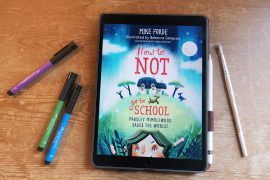When you talk with your child about emotions, try to resist lecturing. Instead, ask questions to help him learn through reflection. For instance, you might ask questions like:
- If you felt angry at a friend, what could you do?
- If you felt angry at me, what could you do?
- If you felt angry that your block tower fell down, what could you do?
- Do you make a better decision when you feel angry, or when you feel calm?
- What helps you calm down when you’re angry?
If you and your child observe another child crying, you might ask questions like:
- “That child looks so unhappy. I wonder why he’s upset?”
- “What do you think he wants/needs?”
- “Is there anything we can do to help?”
Questions like these help develop empathy. For instance, when parents wonder aloud to their young child about what their baby sibling thinks, feel and wants, the child develops more empathy for their sibling and the relationship between the two siblings is more positive. When adults read books and talk to toddlers and preschoolers about how other children feel, their prosocial (positive) actions increase and their aggression toward their peers decreases.
And when parents consider emotion part of a rich human life, and talk about emotions in positive ways, even young children can learn to recognize and articulate a wide range of emotions — which is the first step in learning to manage them.
Find the original article here.
Dr. Laura Markham is the author of Peaceful Parent, Happy Siblings: How To Stop the Fighting and Raise Friends For Life and Peaceful Parent, Happy Kids: How To Stop Yelling and Start Connecting. Find her online at AhaParenting.com










